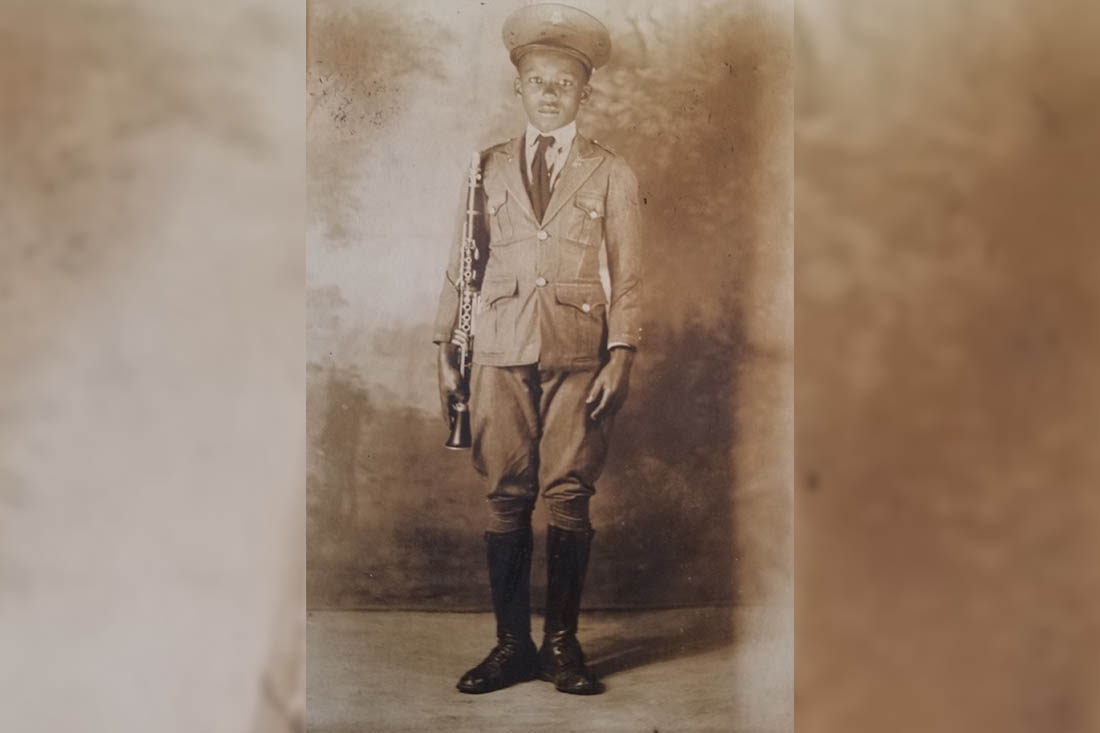It was the early morning of July 26th, several army music bands were in Santiago de Cuba for the carnival celebration, the General Staff Band was based in the capital and had the best musicians from all over the country, it was also invited for the festivity .
Homero Betancourt, from Camagüey, who played saxophone and clarinet, was part of the musical group. Back at the Moncada Barracks, where they were staying, at the end of the presentations, Homero was entering the main esplanade when he was surprised by the shots.
He did not understand what was happening and dodging bullets managed to get to a post, where all the musicians were given weapons and forced to participate in the defense, most refused, because something was clear to them: they were musicians, not soldiers.
Homero Betancourt
He was a talented musician, his father noticed the rhythm he followed with drum sticks and encouraged him in his career, enrolling him in the Álvarez Academy, located on Pobre Street, and then, became part of the Municipal Band of Camagüey, where he was very poorly paid, standing out for his skills with instruments; he was highly advised to go to Havana, so he did, passed an exam and was hired by the Army General Staff Band, with which he went to Santiago.
After the bitter experience in the Barracks, where he saw one of his companions die, he was very affected, he understood what the revolutionaries were up to with their assault, his family also sympathized with Fidel’s ideas and abhorred the abuses of the prevailing dictatorship.
After three months, he went to the Jaime Camino Orchestra, with which he traveled to three countries in Latin America and some in Europe, with the revolutionary triumph the ICRT orchestra emerged, of which he was the founder and in which he remained until his retirement with almost 80 years.
Within the group he stood out for his playing skills, so much so that in each recording of Benny Moré’s Giant Band, his bugle was always called.
His sister Georgina tells
 Georgina Betancourt Caballero, is 96 years old and has many fond memories of her brother. At the beginning of this approach to the life of Homero, who died in 2005, she proudly assures that he was a virtuoso on wind instruments, so much so that he had the privilege of give classes to Nene Álvarez, (father of the musician Adalberto Álvarez) in his youth.
Georgina Betancourt Caballero, is 96 years old and has many fond memories of her brother. At the beginning of this approach to the life of Homero, who died in 2005, she proudly assures that he was a virtuoso on wind instruments, so much so that he had the privilege of give classes to Nene Álvarez, (father of the musician Adalberto Álvarez) in his youth.
He recalls the many times that they reviewed the Moncada episode, during his family visits to Camagüey, and says that he always remembered with regret that imposition of shooting the assailants, but his position was always the same, the son of a revolutionary family would never have shot their peers.
Today, looking back in time, how chance led a Camagüeyan to the Moncada Barracks for Music, I see that Homero’s bitter experience is similar to that of so many revolutionaries, who saw their companions lose their lives in that attempt.
Thanks to Georgina for bringing us closer to her brother and to the historian Yeni Yeisi Adán Casaña, (our partner and Homero’s great-niece), who out of modesty kept that family history to herself.
Homero’s melody is a requiem to the memory of all those who, on the morning of Santa Ana, paid for the freedom of the country with their blood.
Translated by: Aileen Álvarez García







